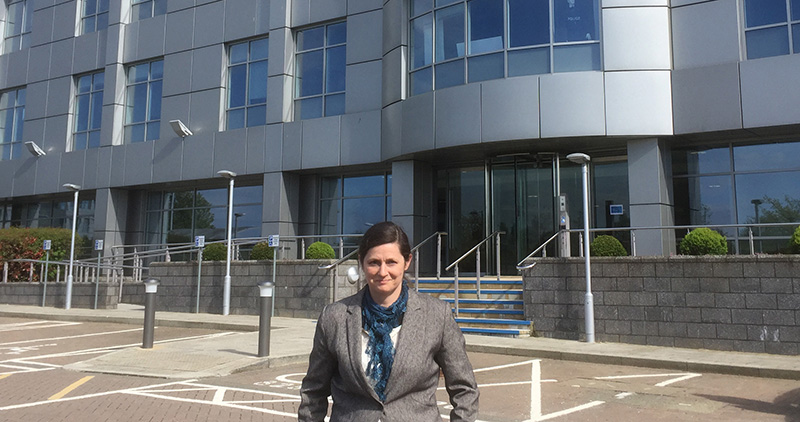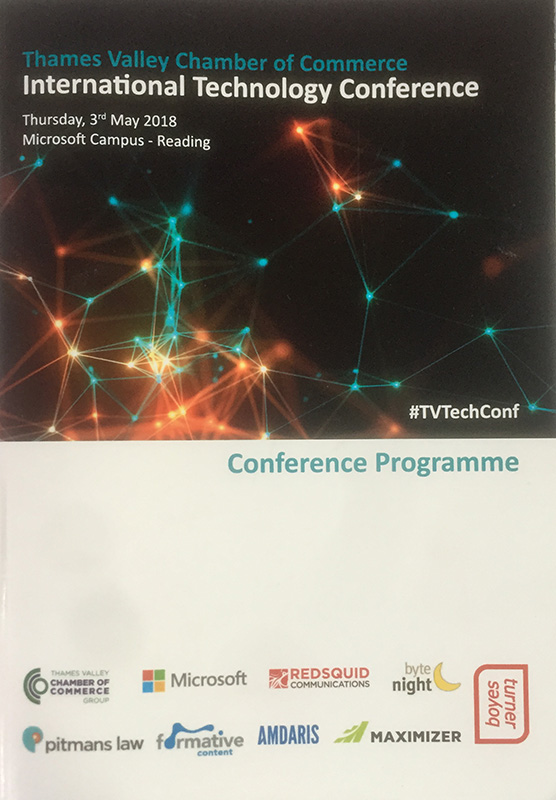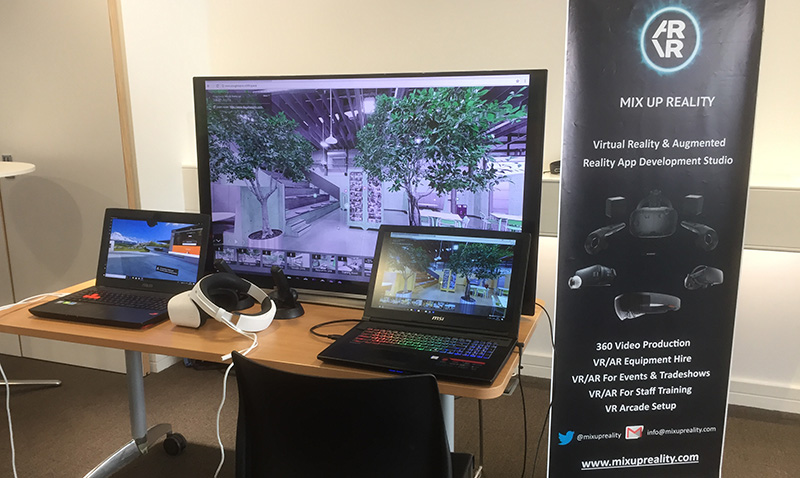As the future unfolds, more connectivity allows for more collaboration, with more opportunities for creating and building businesses to respond to rapid developments in technology. But what are the key pointers for successful innovative business in the future?
Let’s imagine that you have seen the potential for a new development in Virtual Realty to help someone to do something that they have never been able to do before. A great idea, is a good start, and a great product is essential, but if you want to build a successful and lasting business from this, there are some essential things that need to be in place to give you the best chances of success. So here is a Tech start-up check list to make the most of the business opportunities in the Fourth Industrial Revolution. Food for thought if you like, for a Future Business.
“To be successful in business, and in life, you need to connect and collaborate.” Richard Branson
In May 2018 the Thames Valley Chamber of Commerce International Technology Conference held at the Microsoft campus offered several presentations centred around tech entrepreneurship. This blog will offer some of the insights covered at the conference.

Let’s look at some facts
So you have an idea for a great solution, but success is not guaranteed. About 20% of small businesses fail in their first year, 30% in their second year and 50% fail by their fifth year. Some would argue that the failure rate in the first year is much higher, but either way, we can see that many new enterprises fail and there are many reasons why. But what categorises the ones that succeed?
Education for Innovation
In his presentation on Tech Entrepreneurship and Innovation in Education, Norbert Morawetz, (Associate Professor in Entrepreneurship), looked at the role of education in the success of enterprise. Education seems to be a key factor for success, as 95% of successful entrepreneurs have a bachelors degree, and 47% have a higher degree, such as a Masters or a PHD. Let’s face it a PHD can take between 3 and 7 years to complete, depending on whether its undertaken full or part time, and demonstrating that level of commitment and hard work is a good sign that one has the tenacious tendencies needed to succeed.
Enterprises started by teams and more mature people are also more likely to succeed. The average age being 42, although they may have started enterprises before, many entrepreneurs will fail at their first attempt and try again. Only 16% are solo starts, so it seems that teams are a stronger option.
The seven key pointers that we need to take on board when educating for innovation are:
- Entrepreneurship is not exceptional, it is normal activity.
- Collaboration is the key, teams are more successful, but also collaborative approaches between businesses.
- Mindset and learned techniques to test and experiment. Persistence, open mindedness and collaboration are key things developed during PHD study.
- Capital to start a business, unfortunately student loans and debts coupled with the rising cost of living has left students with a debt that is preventing them from building capital for investing in a business.
- Be free to experiment and risk, don’t censor new ideas.
- Spend more than you earn, be bold. Companies like Tesla and Amazon spent to dominate the market before they were able to earn it back.
- Continuous learning, we need to learn how to teach faster, for retraining in uncertain times.
Extreme Creativity
Why do we remember DAY 1, of anything, school, and new job? We don’t remember DAY 2, because it’s a repeat of day one, we’ve started the new routine, we have stopped thinking so much and we are now just surviving. We remember DAY 1 because it’s new.
How do you think? Can you redesign the way you think? Ewan McIntosh (NoTosh Ltd) demonstrates the importance of generating creative ideas in business, but to do so they need to create fertile environments for creativity to flourish. Fresh thinking will solve problems, some people are better at ‘deep thinking’ than others, but this needs to be fostered and given space to breath and grow.
Here’s a good exercise. Can you tell your life story in 6 words? This is inspired by Ernest Hemmingway’s challenge to write a story in 6 words. It read “For sale: baby shoes, never worn.“ here are some great examples – 6 word stories.
I’m still figuring mine out. In fact that is probably it!
Innovation and collaboration
“Innovation occurs BETWEEN brains not INSIDE one brain.” Helena Calle (Fast Future Publishing)
We cannot really innovate on our own, it is the process of sharing the ideas that makes them real, and that makes them come to life. Each one of us has a vital part of the picture, we have our own specialised angle and understanding, but that’s never enough, it’s never the whole picture. We need to connect with others, we need more of that space between brains for an idea to get better. Cloud computing has brought us to a new level of connectivity, every year information in the cloud increases by 40%. That’s great for bringing more brains together, quite literally, but how useful can we make this. In order use this information effectively we need to be able to communicate and we need to be able to process this information.

Types of Data
As vast amounts of data enter the cloud we need to do something useful with it. This cloud of data can teach AI so that it can develop a smart way of doing something useful with this information. This can help us to get more targeted sales.
Physical Data – We also have a relationship developing between our physical selves and the data about our physical selves from physical data sensors. We are logging our activities, GPS positions, heart rates, weights, food intake, in fact a whole range of things.
Internal Data – Customer spending habits, products that are bought, amount of money spent and so on.
External Data – What was going on at the time of this spending. What was the weather doing, what is happening in culture, and politics.
If we think of data this way we can see the potential for offering a more useful service to customers, by being able to target products more directly, and avoid the products that are not relevant and maybe even annoying to customers. Analysing spending habits by being able to add together the different data types brings more clarity to what’s happening in the market.
The Internet of Things
By 2020 there will be 20.8 billion connected ‘Things’. These things will be able to use AI to make ‘intelligent choices’. How ill your ‘Things’ connect and what for?
Customer Value
Matthew McLarty (Innovation Director) reminds us that to stand out from the crowd in a saturated marketplace, and really give value we need to understand our customer needs and offer freebies as entry points to our offerings. Knowing your customer is the best way to understand how to remove any friction to the customer getting what they want.
Finance and Investment
“To get money from an angel, you need sales first” – Bill Morrow (AngelsDen)
“The key factor is interpersonal skills, you need to be likable, entheusiastic and relatable” – Raphael Fassler (Investment Manager)
It’s not just about money, can an investor actually help you, do they have complimentary skills and connections. Softskills (communication) and tech skills need to work together and be aligned to solve a problem. Is everyone in the business on the same page, because a good team, working together is a big indicator of the success of a business.
Diverse revenue streams are also necessary for future proofing in a fast evolving tech environment. This is essential for overall stability in evening out the ups and downs of an ever changing environment.
Cyber Security
One of the biggest threats to tech businesses is likely to be cyber security issues. Paul Ducklin (Sophos) reminds us that hackers can sometimes be revealing security breaches in our businesses, so we need to take responsibility to deal with these on a regular basis. Here are some key points:
- Your email password is your kingpin, if someone hacks this they can use it to get into all your accounts. Make sure this is unique and have a system for changing it at regular intervals.
- Use unique passwords, make sure they are proper passwords that don’t contain personal information, and change them regularly.
- Patch security holes often, and protect entry points.
- Don’t use unsecured networks for internet access.
- Use two factor authentication.
- Be GDPR compliant, protect your customers.
Thanks to my own host that day
Finally a big thank you to Jay at Immersive Computing Labs (formaly Mix Up Reality) of Slough who brought me a s a guest to the conference. My role was to offer attendees the opportunity to try out some VR. You can see the Slough Aspire Matterport Depth Sensing 360 walk through on the large screen. The new Microsoft VR work space is on the small screen to the left, in here you can pull up your regular work panels and place them around you in VR space, you can then walk around them, setting up your virtual work space in a way that helps you and broadens your physical workspace, and the outside environment is pretty cool too.

In summary
So looking at our Tech start-up check list and the opportunities of the Fourth Industrial Revolution, what are the key pointers for successful innovative business in the future?
- Business IS change
- Be something people WANT to follow
- Keep tweaking and adapting
- Work harder to get customers
- Add value and create relationships
- Don’t be scared of making mistakes
- Embrace change
Thank you for reading, I hope it has offered a slightly different approach to a check list, and an approach more tailored to tech start-ups. The opportunities in the Fourth Industrial Revolution are categorised by Big Data and what we do with it, connectivity and how collaborate with it, change and how we embrace it.
Please leave a comment below on anything else a new tech business needs explore.
Thank you.
